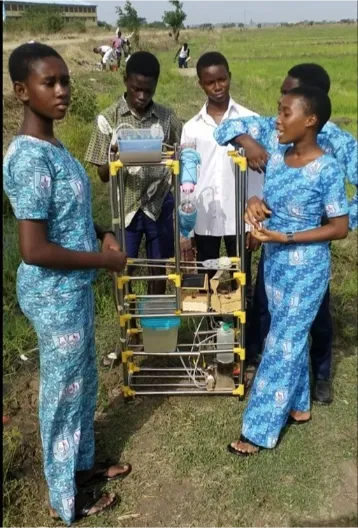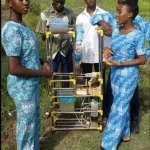Teacher: Michael Kpabitey

Michael Kpabitey
With seven years of teaching experience, Michael specialises in high school education, fostering intellectual growth and character development among students aged 15 to 18 years old. His commitment to innovation led to winning second place in the national STEM competition on clean water solutions, showcasing his dedication to real-world problem-solving. Beyond the classroom, Michael brings a wealth of experience from working in industry. His journey as an educator was inspired by a deep-rooted belief in the transformative power of education. He is driven to empower students with knowledge and critical thinking skills, igniting their passion for creating positive change in the world.
Usefull links related to the Solution
Overview
Precipitation patterns in Ghana have been affected by climate change, in Akuse in the South of Ghana, this has led to an increase in stagnant water and this in turn has led to an increase in malaria and other water-borne diseases in the community. The students at the local school worked together with a team of students from the USA to find a solution to this climate change issue.
Theory of Change
Two teams of students – one from the Global North and one from the Global South – were brought together to examine the local impacts of climate change on their communities. They brought different perspectives and experiences and this led them to increase their understanding of the effects of climate change across the world. Through working together to mitigate one climate change issue the teams increased their understanding of climate change and also developed cross-cultural collaboration and communication skills.
Approach and Actions
The two teams of students identified climate change issues that were affecting their communities. Using video conferencing they then met online and discussed these issues- comparing and contrasting the issues that were encountered in their different contexts. The teams then decided to focus on one issue, and the water stagnation issue was selected. The students in both teams set about carrying out research into elements of climate change related to the issue and other connected STEM research related to the solutions that were becoming apparent. Over several weeks the students met online regularly to discuss their findings and to agree action points. By the end of the project the Ghanaian team produced a prototype water filtration system and the US team produced a design for a pumping system to move water to local irrigation networks so it could be used on local farms. The project provided students with real world examples of environmental problem solving and an opportunity to use critical thinking to develop a sustainable engineering solution. All students also developed a deep understanding of the wider impacts of water quality, sustainability practices in farming, solar energy and the use of electrolysis in hydrogen power production.
Impact
This hands-on experience enhanced the students’ understanding of environmental issues and motivated many students to consider careers related to water management and conservation. The project also demonstrated to students the potential for sustainable solutions to have broader social, economic and health benefits. More broadly the project demonstrated that integrating environmental sustainability into education and actively involving the community can address environmental challenges effectively.

